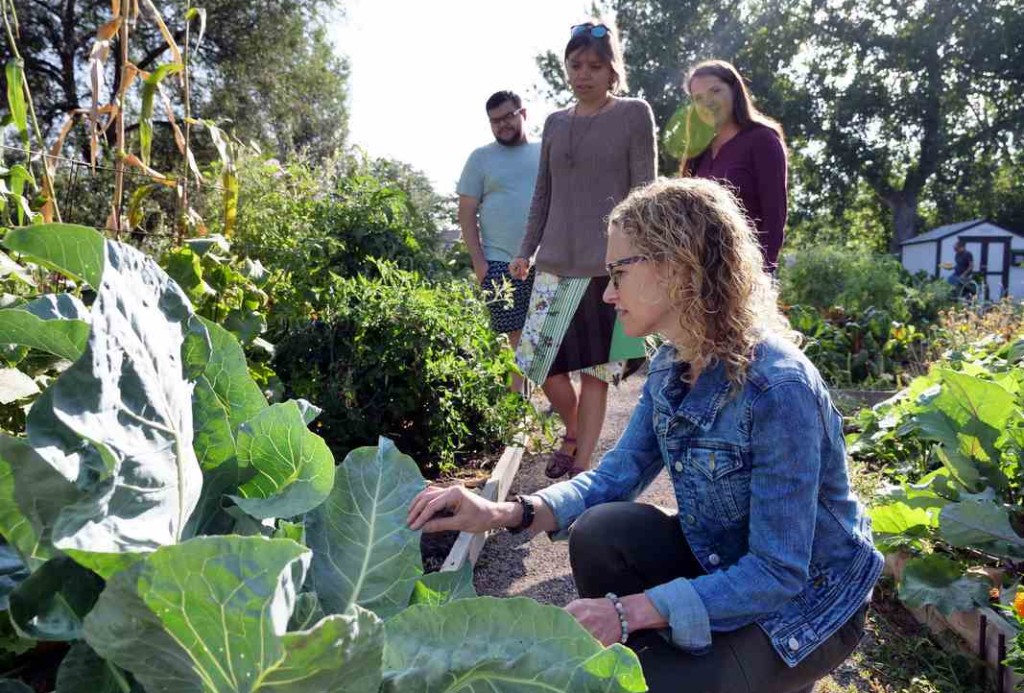Growing Your Garden: Filling the feeders for our feathered friends

A few days ago, a small flock of dark-eyed juncos were making a commotion in the magnolia tree just beyond our kitchen window.
They were making enough noise that I could hear them through the closed window, so I quietly slid the back door open to better hear their chorus (or complaints). The serenade lasted no longer than 10 minutes, but it made me realize how much I missed the sound of bird song now that winter has silenced the garden.
Sure, we see the resident cardinals stop in for visit, or hear the ‘caw-caw’ of the bluejay, but it’s been pretty quiet — it’s as if my regular avian friends were giving me the cold shoulder — and for good reason, I had not been feeding them this winter.
I stopped putting out birdseed because of all of the other creatures I wasn’t keen to feed over the winter, in particular the vermin and squirrels, which have been a problem in the past. But this week’s serenading (lamenting?) juncos pulled on my heartstrings. It was time to fill the feeders again.
Birds that don’t migrate need extra calories to stay warm during the cold weather. They spend most of their days foraging for food, things start to get a little sparse as January rolls along, as most of the picked-over echinacea seed heads in the back garden attest to.
We can help our feathered friends weather the cold nights by regularly filling our feeders and offering them shelter by including more conifers and twiggy shrubs in our landscapes.
A valuable source of information regarding the best feeding strategies for local birds is the Cornell Lab of Ornithology, www.allaboutbirds.org. Here are a few suggestions on birdseed to put out to attract the widest variety of birds and make the most of your ‘bird seed’ budget.
The mainstay for most backyard bird feeders is sunflower seed. Mixtures that contain red millet, oats and other “fillers” are not attractive to most birds and can lead to a lot of waste as the birds sort through the mix and discard their least favourite seeds.
Sunflower
There are two kinds of sunflower — black oil and striped.
The black oil seeds are smaller and have thin shells, making them easy for all seed-eating birds to crack open, and the kernels within have a high fat content, extremely valuable for most winter birds. Striped sunflower seeds have a thicker shell, much harder for house sparrows and blackbirds to crack open. Sources suggest using striped sunflower seed to deter blackbirds and sparrows if they are a problem.
If you don’t like cleaning up the shells beneath the feeder, you can purchase shelled sunflower seeds. They come at a premium, and need to be refreshed often as they spoil quickly without their protective shells. Spoiled seed can harbour harmful bacteria.
I have invested in two different squirrel and large-bird (think bullies) deterring feeders.
One is a large black metal sphere shaped cage with a metal mesh seed tube inside. Small birds like finches, sparrows and juncos can slip between the outer grid and then calmly feed once inside the sphere.
The other feeder looks like the standard tube feeder, but an outer steel mesh sleeve slides down to cover the feeding hole if a heavy bird or squirrel lands on any of the perches. A cardinal won’t trigger closing the feeding hole, but a blue jay or squirrel can’t reach the cache of seed.
Safflower
Safflower seed has a thick shell and is a favourite among cardinals. Some grosbeaks, chickadees, doves, and native sparrows also eat it.
Cardinals and grosbeaks tend to prefer tray and hopper feeders, which makes these feeders a good choice for offering safflower. The cardinals in my neighbourhood don’t mind taking a turn at the tube feeder, but I notice they prefer foraging on the ground, so I may invest in some sort of squirrel proof tray feeder in the future.
White proso millet
White millet is a favourite with ground-feeding birds including quails, sparrows, doves, towhees, juncos, and cardinals. Because white millet is so preferred by ground-feeding birds, it’s often scattered on the ground — an excellent practice as long as no more is set out than birds can eat in a day.
Niger
Small finches including goldfinches, indigo buntings, pine siskins and common redpolls often devour these tiny, black, needle-like seeds.
Niger is the seed of a daisy-like plant, known as Guizotia abyssinica, that produces small, oily, rich seed. Thistle seed was a popular treat for small finches years ago, but the sprouting seed was very invasive. Niger seeds are heat-sterilized during importation to limit their chance of spreading while retaining their food value.
Peanuts
Peanuts are very popular with jays, crows, chickadees, titmice, woodpeckers and many other species, but are also favoured by squirrels, raccoons and other animals that should not be subsidized. Peanuts in the shell can be set out on a deck railing as a special treat for jays, they usually grab them before any other animals stop by.
It took several days before the local birds noticed that the feeders had been filled.
Along with my grateful chorus of black eyed juncos, I’ve seen goldfinches, house finches, sparrows, cardinals, blue jays and a solitary mourning dove. A woodpecker made a brief visit to the suet feeder this morning — the garden may be sleeping, but it feels very lively again.




